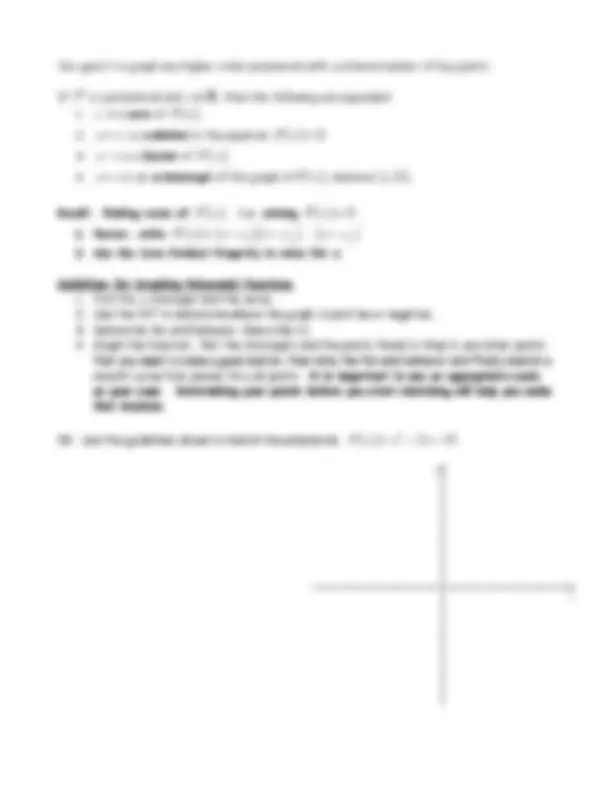




Study with the several resources on Docsity

Earn points by helping other students or get them with a premium plan


Prepare for your exams
Study with the several resources on Docsity

Earn points to download
Earn points by helping other students or get them with a premium plan
Community
Ask the community for help and clear up your study doubts
Discover the best universities in your country according to Docsity users
Free resources
Download our free guides on studying techniques, anxiety management strategies, and thesis advice from Docsity tutors
An in-depth exploration of polynomial functions, their graphs, and the methods to determine their zeros, positive and negative regions, and end behavior. Topics include the intermediate value theorem for polynomials and the leading term test. Students will learn how to sketch polynomial functions using given examples.
Typology: Study notes
1 / 4

This page cannot be seen from the preview
Don't miss anything!



Math29 3.1: Polynomial Functions and Their Graphs
1 1 ... 1 n n P x a xn an x a x a − = + (^) − + + + 0 Where n ∈ ], n > 0; and an ≠ 0 Terms: Coefficients leading coefficient constant term leading term
7 3 2 P x = 5 x + 4 x − 7 x − x + 9 Graphs of Polynomials: Always a smooth curve, with no breaks (always continuous), with no sharp corners or cusps.
n P x = x Degree 0 or 1 Degree 2 degree 3 Even Degree >2 Odd Degree > Remember Graphing by Translations?
(^4 2 5 4 ) a) P x = x − 3 , b) P x = 3 x − 4 − 1, c ) P x = x + x − x + 2 You know the general shapes, and how to translate or shift (a) and (b). We need to get a little more information for (c) to make a “nice” sketch. We first need a couple of tools to help us determine where the function is positive or negative and then the far-end behavior of the graph. These tools are the Intermediate Value Theorem for Polynomials and the Leading Term Test.
all positive (above the x-axis) or all negative (below the x-axis). Think about the sign graphs that we used for non-linear inequalities. End Behavior and the Leading Term Test: The end behavior of a polynomial is a description of what happens as x → ∞ ( x gets very large in the positive direction) or what happens as x → − ∞ ( x gets very large in the negative direction). End behavior is determined by the leading term,. n a xn
CASE 1A: If n is an odd degree and an > 0 CASE 1B: If n is an odd degree and an < 0 Case 2A: If n is an even degree and an > 0 Case 2B: If n is an even degree and an < 0 Describe the end behavior for each of the following:
3
6 4 P x = 8 x + 45 x − 9 x + 2
3 2 P x = x − 2 x − x + 2. x y
4 3 P x = x − 2 x + 8 x − 16. x y